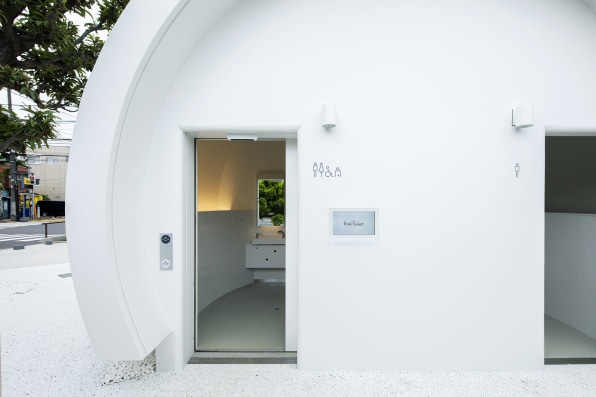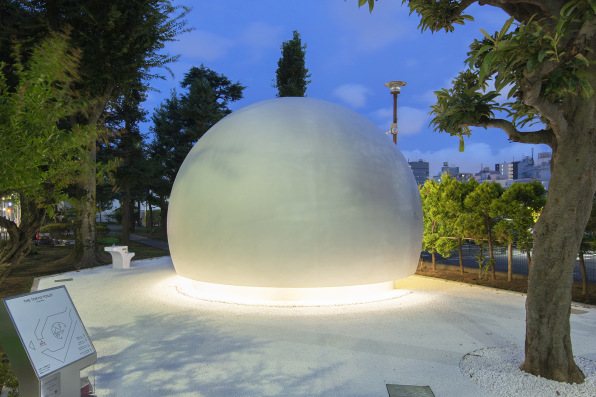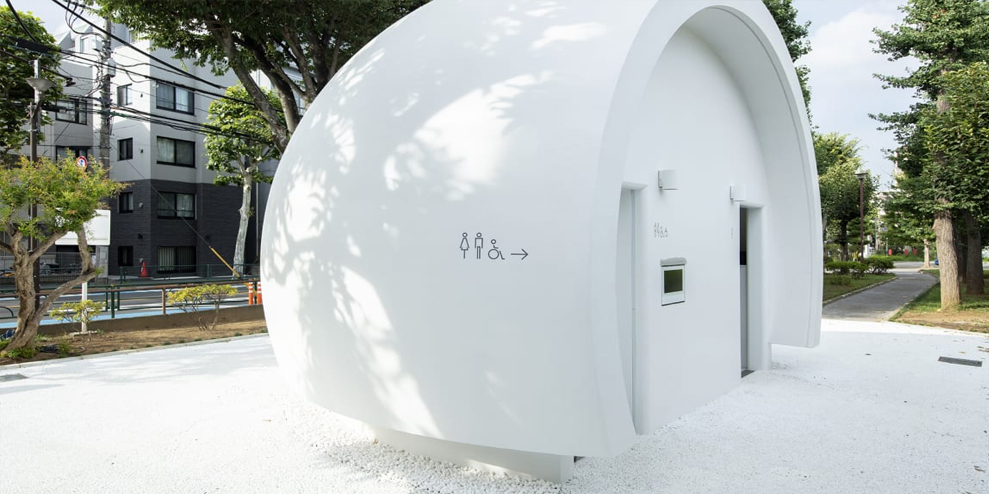All you have to do is greet it, and a chime will invite you to voice your next command.
Wait a few years and you may rule the world with nothing but your voice. Already, you can whisper “Alexa” and she’ll start the vacuum in your living room, or call upon Google and your Nest thermostat will adjust to the right temperature.
In Tokyo, you can now enter a new public restroom, flush, wash your hands, and even play music—all without ever touching a surface. All it takes is a voice greeting: “Hi Toilet.”

Self-described as the most hygienic toilet in the world, Hi Toilet is the latest iteration of the Tokyo Toilet Project, which is replacing 17 public toilets in Shibuya, a popular shopping and entertainment area, with clean, modern, accessible structures. This particular toilet was designed by Kazoo Sato, the chief creative officer at advertising agency TBWA\Hakuhodo. After a year and a half of acrobatics to flush with our foot, or turn the doorknob with a paper towel that then must be discarded while the door is propped open, this offering is a welcome addition to our public restroom needs. And, while the idea for a hands-free toilet germinated well before the pandemic, it’s a timely reminder that we all deserve a safe, clean, and inclusive place to do our business in the city.
To activate the toilet, all you have to do is greet it, and a chime will invite you to voice your next command. “‘Hi Toilet’ works as a hot word for the facility to start receiving voice commands,” explains Sato, who designed the facility in collaboration with TBWA’s Disruption Lab. “Just like ‘Hey Siri.’”
The team built a custom voice command system using a Japanese open-source speech recognition library. For now, the toilet only responds to Japanese and English speakers, but Sato says any language can be programmed into it, as long as it’s supported by the underlying technology.
So, once you have the toilet’s full attention, the experience is a bit like talking to a chatbot. For the AI to parse out a command, it has to understand what you’re asking for. To that end, designers used a human-computer interaction technology that helps build a more conversational AI by matching your commands—”flush the toilet,” “turn on the tap”—with a set of pre-defined actions.
And since none of this would work without the toilet being able to hear you, the studio also developed a sound system with automation sensors and control systems. Once inside, an infrared sensor identifies where the voice command was made and takes control of the room, something like the Weasley’s enchanted house in Harry Potter, except in this case, the magic is real.

If you’re feeling in the mood, Hi Toilet can even play some music for you. “A lot of people using public facilities run the tap water or flush only to muffle the sound when they’re doing their business,” explains Sato. “It’s an incredible waste of water and not at all sustainable.” The music takes care of that, but Sato says there’s another reason behind it.
A 2018 Japanese study found that a music frequency of 528 Hz has an especially strong stress-reducing effect, even with only five minutes of exposure. “It is said that the 528 Hz frequency stimulates bowel movements,” he explains. The user can choose between ten genres including hip-hop, classical, and what Sato calls “therapootic music,” which taps into that frequency.
Kazoo’s idea for a hands-free toilet came well before the pandemic brought hygiene into the spotlight. A 2015 report on bathroom behavior found that 60% of users were stepping on toilet levers to flush. Half of them were opening the door with toilet paper, and 30% were avoiding hand contact as much as possible, and using their elbows. The report was focused on public restrooms across Europe and the U.S., but Sato says he has seen similar behaviors in Tokyo.
According to the Nippon Foundation, the nonprofit that launched the Tokyo Toilet Project, Japan’s reputation as one of the cleanest countries in the world is not reflected in its public restrooms. Over the past year, many such toilets have opened in Shibuya. In July, Kengo Kuma revealed a cedar-clad “toilet village” of five huts in Shoto Park. And earlier this month, graphic designer Kashiwa Sato built a cube-shaped toilet wrapped in white aluminum louvers just outside of Ebisu station.
For Sato, a contactless restroom can highlight the importance of public facilities, and the need for them to be viewed as a commodity, not a luxury. “I also hope the design appeals to peoples’ sense of pride and ownership,” he says, “to ensure public facilities remain maintained, clean and cared for, for everyone’s enjoyment and comfort.”
Hi Toilet opened earlier this month. It’s too soon to tell whether people will say goodbye to it when they leave.
…
This article first appeared in www.fastcompany.com
Seeking to build and grow your brand using the force of consumer insight, strategic foresight, creative disruption and technology prowess? Talk to us at +971 50 6254340 or mail: engage@groupisd.com or visit www.groupisd.com/story



